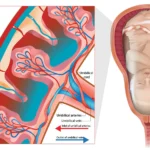Chorionic villus sampling procedure is used to detect genetic disease while pregnant. Your doctor may recommend this test if there is a possibility that your baby will be born with birth defects.
Chorionic cells share a similar genetic makeup with the unborn child. The testing of this sample helps detect problems with the growing fetus.
How effective is the chorionic villus sampling procedure?
The test is meant to identify associated chromosomal disorders, like Down syndrome, or medical conditions like Tay-Sachs or cystic fibrosis. However, CVS will not be able to detect neural tube defects. With the help of this test, the early finding of severe conditions
Who needs a chorionic villus sampling procedure?
Pregnancy can be a risk factor.
- You are over 35 years old.
- There are cases of genetic disorders.
- The previous screen test results have been abnormal.
- You have a child with a rare disease

Procedure
The position of your placenta determines whether you can perform this test. Transcervical CVS entails taking a tissue sample through the cervix. Utilizing ultrasound technology, your doctor will place a tiny tube into your cervix and direct it toward the placenta.
The doctor inserts a long, thin needle into your abdomen. The hand will pass through the placenta and uterus.
Risks
Similar to an invasive process, CVS may also cause specific side effects such as–
- Cramps
- Infection
- Bleeding
- Miscarriage
- Amniotic fluid leak
- Premature delivery
- In a few cases, babies are born with faulty limbs.
Genetic and chromosomal testing during the first trimester of pregnancy may be done using the chorionic villus sampling procedure. I hope the above-provided information is very informative and valuable. Thank you for taking the time to read the content.






